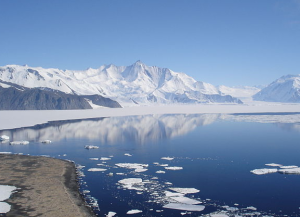
Navigating Climate Tipping Points: The Irreversible Crossroads of 2025
As 2025 unfolds, scientists and policymakers find themselves at a crucial junction in the fight against climate change. The current trends suggest that we are nearing several climate tipping points, potentially leading to irreversible impacts on the planet’s ecosystems and climate systems. This blog post explores the most recent insights from leading research, offering a comprehensive understanding of what these tipping points entail and what actions can be taken to address them.
Understanding Climate Tipping Points
Climate tipping points refer to critical thresholds where small changes can lead to drastic shifts in the Earth’s systems. Once crossed, these changes can be difficult, if not impossible, to reverse. Scientists are particularly concerned about the effects of these tipping points on the Amazon rainforest, Arctic ice, and global ocean currents.
The Amazon Rainforest
Recent research highlights the Amazon as a region precariously close to a tipping point. Continued deforestation and degradation threaten to transform vast areas of the rainforest into arid savanna. According to a report by the Earth System Dynamics, if current deforestation trends continue, we might witness significant loss and degradation, affecting biodiversity and releasing billions of tons of carbon dioxide back into the atmosphere, exacerbating climate change further (Mongabay).
Arctic Ice and Ocean Currents
The Arctic is another area where warming temperatures threaten to push systems past their tipping points. The melting of Arctic ice sheets could lead to disruptions in ocean currents, affecting global weather patterns. Ocean currents, such as the Atlantic Meridional Overturning Circulation (AMOC), play a crucial role in regulating climate by redistributing heat and nutrients across the globe. A weakening or shutdown of these currents could have severe implications for weather stability and marine life (Earth System Dynamics).
Global Implications and Urgency for Action
The potential crossing of climate tipping points entails severe ecological and socio-economic consequences worldwide. According to the United Nations, surpassing the 1.5°C global warming threshold could trigger multiple tipping points, leading to cascading effects on human and natural systems that would require substantial adaptation and mitigation efforts.
Current Trends and Reports
Analyses from recent studies emphasize the probable activation of tipping elements under existing climate policies. The failure to meet the targets of the Paris Agreement, coupled with insufficient reduction in greenhouse gas emissions, has heightened the probability of these thresholds being exceeded. A report by the OECD suggests that current scientific understanding points to a lack of global action, potentially leading to severe changes in climate systems.
Navigating Forward: Solutions and Adaptations
While the situation is dire, efforts at both local and international levels can still make a significant difference. Cutting emissions, transitioning to renewable energy, and protecting natural habitats are crucial steps in avoiding the most drastic outcomes. Organizations like the OECD are working to review and enhance current policies to integrate climate adaptability and resilience measures (OECD).
Positive Tipping Points
The concept of positive tipping points involves engineering interventions in socio-economic and ecological systems to facilitate rapid positive changes. These could involve widespread adoption of sustainable practices, innovative technologies, and international cooperation to establish norms that favor environmental conservation and resilience to climate impacts (World Economic Forum).
While we stand at the brink of several tipping points, the window for action remains open. Proactive global responses, informed by science and collaborative strategies, are essential to navigating this critical moment in Earth’s climate history. By understanding and mitigating these risks, humanity can steer towards a sustainable future.



